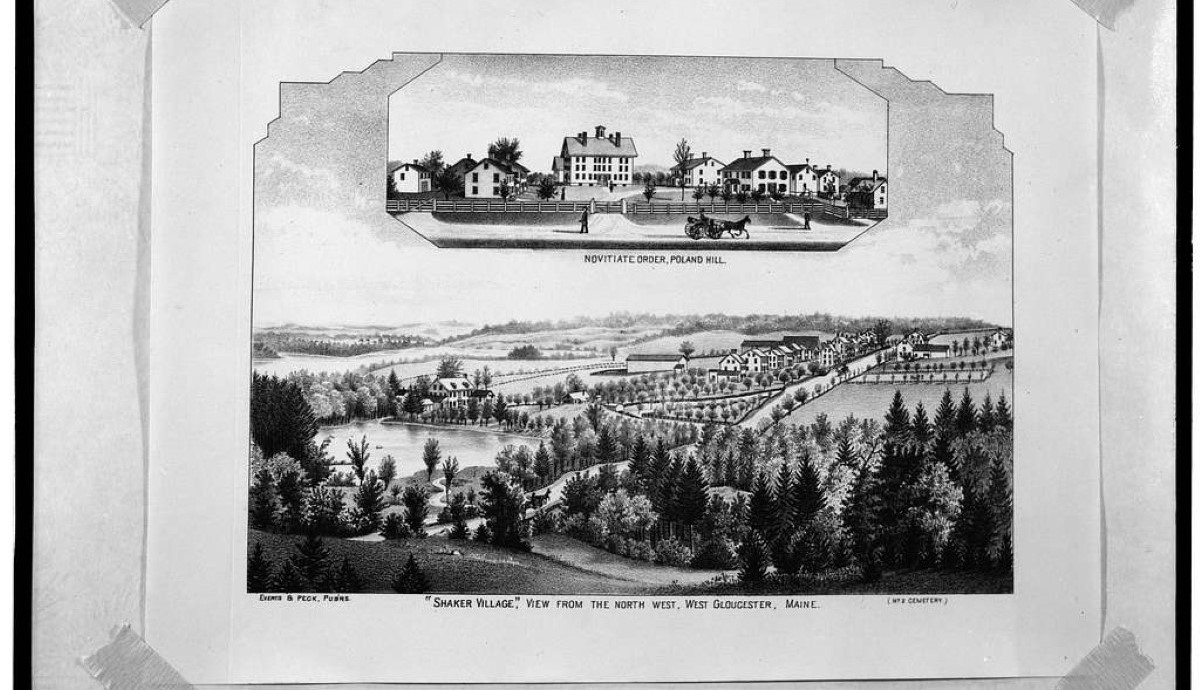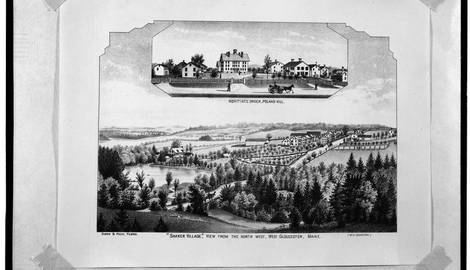
Maine’s history is a rich blend of Indigenous heritage, colonial conflict, maritime industry, and cultural resilience. Once part of Massachusetts, Maine played a pivotal role in early American warfare, from French and Indian battles to Revolutionary outposts like Fort Western and Fort Halifax. Its statehood in 1820 marked the beginning of a unique identity rooted in rugged coastlines, shipbuilding, and steadfast communities. The state’s harbors launched six-masted schooners, while its towns raised poets, generals, and artisans who shaped American culture. That legacy still breathes through its remarkably preserved landmarks. Below are ten historic sites across Maine that bring the state’s past vividly to life.
1. Portland Head Light, Cape Elizabeth

Standing sentinel on the rugged coast of Cape Elizabeth, Portland Head Light is Maine’s oldest lighthouse and one of its most iconic. Commissioned by George Washington and completed in 1791, the lighthouse has guided ships safely into Portland Harbor for over two centuries. Built with local stone and once powered by whale oil, it has withstood fierce Atlantic storms and changing times, remaining a steadfast symbol of Maine’s maritime heritage.
Today, visitors come not only for the sweeping ocean views and dramatic cliffs, but also for the sense of history etched into every corner of Fort Williams Park, where the lighthouse stands. You can explore the old keeper’s quarters, now a museum filled with artifacts and stories of shipwrecks and lighthouse life. The grounds offer picnic spots, walking trails, and panoramic photo opportunities.
2. Fort Knox State Historic Site, Prospect

Perched on the west bank of the Penobscot River in Prospect, Fort Knox stands as a testament to 19th-century American coastal defense. Constructed between 1844 and 1869, it was the first fort in Maine built entirely of granite, sourced from nearby Mount Waldo. Named after Major General Henry Knox, the first U.S. Secretary of War, the fort was part of the Third System of coastal fortifications, designed to protect the Penobscot River Valley and the vital lumber port of Bangor from potential British naval incursions.
Though never engaged in battle, Fort Knox was manned during the Civil War and the Spanish-American War, serving as a training ground for troops, including members of the renowned 20th Maine Volunteer Infantry Regiment. Today, visitors can explore its well-preserved granite walls, underground passages, and original Rodman cannons. The fort also features “hot shot” furnaces, once used to heat cannonballs intended to set enemy ships ablaze.
Adjacent to the fort is the Penobscot Narrows Bridge and Observatory, the tallest public bridge observatory in the world. A swift elevator ride transports visitors 420 feet above the river, offering panoramic views of the surrounding landscape.
3. Fort Western, Augusta

Nestled along the banks of the Kennebec River in Augusta, Old Fort Western stands as the oldest surviving wooden fort in the United States. Constructed in 1754 during the French and Indian War, this National Historic Landmark offers a vivid glimpse into 18th-century colonial life.
Originally built by the Kennebec Proprietors, a Boston-based land company, Fort Western served as a fortified trading post and supply depot for Fort Halifax, located 17 miles upriver. Its strategic location at the head of navigation on the Kennebec River made it a vital link in the chain of British colonial defenses.
In 1775, during the American Revolutionary War, Benedict Arnold’s expedition to Quebec stopped at Fort Western. Arnold, along with notable figures like Daniel Morgan and Aaron Burr, used the fort as a staging area to repair bateaux and gather supplies before continuing their arduous journey northward.
Today, Old Fort Western operates as a living history museum, meticulously restored to reflect its original 18th-century appearance. Visitors can explore the original 1754 garrison building, reconstructed blockhouses, and palisade walls.
Costumed interpreters bring history to life, demonstrating colonial-era crafts, military drills, and daily activities. Exhibits showcase artifacts from the period, providing insight into the lives of soldiers, traders, and settlers.
4. Victoria Mansion, Portland

Nestled in Portland’s historic West End, Victoria Mansion, also known as the Morse-Libby House, is a premier example of 19th-century Italianate architecture in the United States. Built between 1858 and 1860 as a summer residence for hotelier Ruggles Sylvester Morse and his wife Olive, the mansion showcases opulent design and advanced technological features of its time.
Designed by architect Henry Austin, the mansion features a brownstone exterior with a distinctive four-story tower, overhanging eaves, and ornate windows. The interiors, crafted by German-born cabinetmaker Gustave Herter and Italian artist Giuseppe Guidicini, boast elaborate wall paintings, carved woodwork, and original furnishings. Notably, the mansion incorporated modern amenities such as central heating, gas lighting, and hot and cold running water, luxuries uncommon in the mid-19th century.
After changing hands to the Libby family in 1894, the mansion remained largely unaltered until the early 20th century. Threatened with demolition in 1940, it was rescued by preservationist William H. Holmes and opened to the public as a museum in 1941. Today, over 90% of its original interiors are intact, offering visitors a rare glimpse into Victorian-era elegance.
5. Wadsworth-Longfellow House, Portland

The Wadsworth-Longfellow House in Portland stands as a testament to American history and literature. Built between 1785 and 1786 by Revolutionary War General Peleg Wadsworth, it is the oldest standing structure on Portland’s peninsula and the first wholly brick dwelling in the city. This Federal-style home became the childhood residence of his grandson, renowned poet Henry Wadsworth Longfellow, who lived there for 35 years.
In 1901, Anne Longfellow Pierce, Henry’s sister and the last family member to reside in the house, bequeathed it to the Maine Historical Society. The following year, it opened to the public as Maine’s first historic house museum. Today, visitors can explore rooms preserved with original furnishings, offering a glimpse into 19th-century domestic life.
Adjacent to the house is the Longfellow Garden, a tranquil Colonial Revival-style garden established in 1924. This serene space provides a peaceful retreat in the heart of downtown Portland.
6. Fort Halifax, Winslow

At the confluence of the Kennebec and Sebasticook Rivers in Winslow stands Fort Halifax, home to the oldest surviving wooden blockhouse in the United States. Constructed in 1754 during the French and Indian War, this fortification was part of a strategic network, including Fort Western and Fort Shirley, designed to protect the northern frontier of the Massachusetts Bay Colony from French and Native American incursions.
Named after George Montagu-Dunk, 2nd Earl of Halifax, the fort was established under the command of Major General John Winslow. Upon arrival with a force of 600 men, Winslow documented the fort’s construction:
“…On the next day, laid out the ground, began to clear it… hoisted the King’s colors with the beat of drum and sound of trumpet and discharge of our whole artillery and small arms, drank to his Majesty and called this place Fort Halifax…”
Despite its formidable presence, Fort Halifax faced challenges. In November 1754, Wabanaki warriors attacked, resulting in casualties and captives. Such raids underscored the volatile nature of frontier life during this period.
After the fort’s military relevance waned, it was largely dismantled by the early 19th century, leaving only the blockhouse. This structure endured until a devastating flood in 1987 swept it away. Remarkably, many original logs were recovered downstream, and by 1988, the blockhouse was meticulously reconstructed on its original site.
7. Sabbathday Lake Shaker Village, New Gloucester

Tucked into the rolling hills of New Gloucester, Maine, Sabbathday Lake Shaker Village is the last active Shaker community in the world. Founded in 1783, this National Historic Landmark spans over 1,800 acres of farmland, forest, and 17 historic buildings, preserving the Shakers’ legacy of simplicity, craftsmanship, and communal living.
Visitors can explore the Shaker Museum, which houses over 13,000 artifacts, including furniture, textiles, tools, and medicinal herbs, that reflect over two centuries of Shaker life. Guided tours offer insights into the community’s daily rhythms, from worship in the 1794 Meetinghouse to work in the Brethren’s Shop and herb gardens. The village also hosts seasonal events, craft workshops, and Sunday worship services open to the public.
8. Joshua L. Chamberlain Museum, Brunswick

In the heart of Brunswick, the Joshua L. Chamberlain Museum offers a window into the life of one of America’s most revered Civil War heroes. Chamberlain, celebrated for his leadership at Gettysburg’s Little Round Top, was also a four-term Maine governor and president of Bowdoin College. His home, now a museum operated by the Pejepscot History Center, preserves his legacy through personal artifacts and stories.
Visitors can explore rooms filled with original furnishings and memorabilia, including Chamberlain’s Civil War boots, his ceremonial governor’s chair and desk, and the minié ball that nearly ended his life at Petersburg. The house itself, moved and expanded by Chamberlain in 1867, reflects architectural styles of the era and the family’s personal touches.
Open seasonally from Memorial Day weekend through October, the museum offers guided tours that delve into Chamberlain’s military achievements, academic contributions, and personal life.
9. Winslow Homer Studio, Prouts Neck, Scarborough

Perched on the rugged cliffs of Prouts Neck in Scarborough, the Winslow Homer Studio offers an intimate glimpse into the life and work of one of America’s most revered artists. Originally a carriage house, the building was transformed in 1884 by architect John Calvin Stevens into a studio and residence for Homer, who sought solitude and inspiration from the sea.
Homer lived and worked here until his death in 1910, creating iconic seascapes like The Fog Warning and Eight Bells, capturing the raw power and beauty of the Atlantic. The studio’s second-floor balcony, known as the “piazza,” provided Homer with panoramic views that deeply influenced his art.
In 2006, the Portland Museum of Art acquired the property and undertook a meticulous restoration to return the studio to its original state. Today, visitors can experience guided tours that begin at the museum and transport them to Prouts Neck, where they can explore the studio, view original furnishings, and immerse themselves in the environment that inspired Homer’s masterpieces.
10. Maine Maritime Museum, Bath

On the banks of the Kennebec River in Bath, the Maine Maritime Museum captures the deep maritime legacy of a state shaped by shipbuilding and sea trade. Open since 1962, the museum sits on a 20-acre waterfront site that includes the historic Percy & Small Shipyard, the only surviving shipyard in the United States where large wooden sailing vessels were built. Visitors can walk through original 19th-century buildings, including a blacksmith shop and caulking shed, and witness where ships like the massive six-masted schooner Wyoming were once launched.
The museum’s exhibits are both immersive and hands-on, covering everything from lighthouse life to lobster fishing. The restored Donnell House offers a glimpse into the daily life of a 19th-century shipbuilder’s family. Outside, a full-scale sculpture of the Wyoming dominates the landscape. In warmer months, river cruises offer a close-up look at Maine’s lighthouses, wildlife, and the active Bath Iron Works shipyard. For anyone curious about Maine’s seafaring story, this museum is essential.










